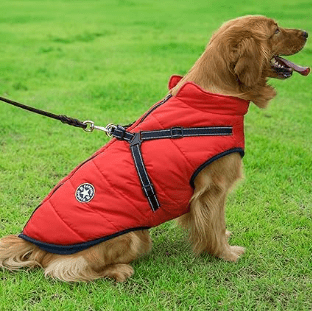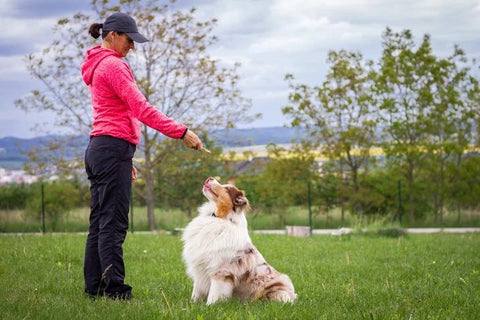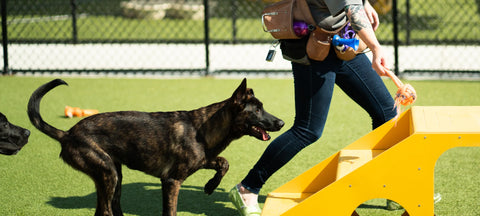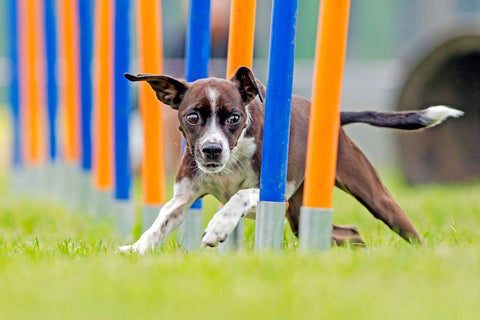on purchases over €75
on purchases over €75

Problems with dog training? Here is a list of 11 common mistakes to avoid!

Training should begin the moment you welcome your new dog home, regardless of his age.
Despite the popular saying, an old dog can learn new tricks . But when it comes to dog training, if you've got a little pup on your paws, you'd better teach him now . than wait until he acquires bad habits that you will have to correct later .
From crate and potty training to basic commands, the only way for your puppy to learn what is acceptable in your home is to set aside time every day to work with him.

You are guilty of working with your puppy for a few days, getting busy with something else, and then abandoning training sessions completely (as if training were a new toy that you played with and then got tired of) ?
Maybe you take your dog to obedience school, but don't work with him between classes. Or maybe you assumed that since your dog sits when you show him a treat, training is over.
Practice makes perfect and here's the thing: although training should begin the day you welcome your puppy home, it never ends.
We need to work consistently with our puppies every day to progress and keep their skills sharp.

Instead of one long training session, it's better to break it up into several sessions throughout the day.
Dogs have short attention spans and working on the same commands can get boring. Each time you work with your dog, limit training sessions to 10 to 15 minutes.
If at any time you notice you or your dog becoming frustrated, say one last simple command and then move on to something else.
When it comes to dog training, consistency is key.
Inconsistencies simply lead to a confused dog and a frustrated owner. For example, if you often tell your dog down when he is jumping on a guest but suddenly tells him to leave , he won't understand what you want.
Make sure everyone in your household is on the same page when it comes to training rules and tips.
When you begin command training, it's best to take your dog to a quiet, distraction-free room.
However , once your dog has mastered a specific cue in that space, your work is not over. Instead, this is just Step 1.
Then, it is important to work on this same tip in different places in your home, in your yard and, eventually, in public places. The goal is to slowly increase the level of distraction and get your dog to listen no matter what is going on around him.

Many coaches suggest the use of a clicker to mark the desired behaviors.
In case you're not familiar, a clicker is a small, inexpensive, handheld device that has a metal strip inside. Once you press the clicker button, it makes a distinct clicking sound.
When used correctly, the clicker can help speed up the training process.
See how it works:
The timing of the click and subsequent treatment is essential (must be within one second of the desired action) .
If the click and reward come too late, your dog may associate it with another action.

When you welcome a new puppy into your home and start training sessions, treats quickly become your best friend.
You use them to attract and reward. But just because your dog gets a delicious treat doesn't mean you should skip the verbal praise and petting.
A sweet-sounding “good girl” or “good boy” goes a long way with dogs, as they love to please their humans.
Additionally, once your dog has mastered a certain command, you will gradually eliminate the treat and rely solely on praise.
Imagine this: you are trying to teach your dog the Sit command.
Then, you take the treat and instruct him to sit. But instead of immediately sitting down, he just sits there looking at you.
So you repeat the word “Sit down” . And once again, “Sit down” .
You can repeat this five or six times until your dog reacts.
It's important to understand: dogs have exceptional hearing... much better than ours! This way, when you shout a command, you don't have to repeat it over and over, louder and louder.
Your dog hears you perfectly.
Continuously repeating a command will only stress, frustrate and even confuse your dog.
Furthermore, we don't want to condition our dogs to only pay attention after we repeat a word several times.
The cue is “Sit down”… not “Sit down, sit down, sit down.”
If your dog ignores your cue, he may not fully understand what you want or he may be very distracted.
After giving a command, remain calm and patient.
If he doesn't listen, take him to a quiet place and go back to basics.

Just as it sounds, this means you've accidentally linked a cue to something negative, so your dog eventually stops responding.
For example, you finally mastered the command “Come” , but you only use it when you are about to give your dog a bath or get in the car to go to the vet.
Eventually, your dog will stop coming when called... because he knows something not so fun is about to happen.
When your dog is first learning commands, keep things positive and avoid pairing it with something he doesn't like.
One of the most common mistakes people make with their dogs is accidentally reinforcing bad behaviors (or should I say unwanted ).
Here are some examples:
As tempting as it may be to give in to your dog while he's acting up (to stop the barking or unwanted behavior), doing so only reinforces his actions.

Just like people, dogs have unique personalities.
When it comes to training, some will learn faster than others. It is important to remain patient and calm.
Lastly, don't hesitate to ask a professional dog trainer for help.
{"one"=>"Select 2 or 3 items to compare", "other"=>"{{ count }} of 3 items selected"}
Leave a comment